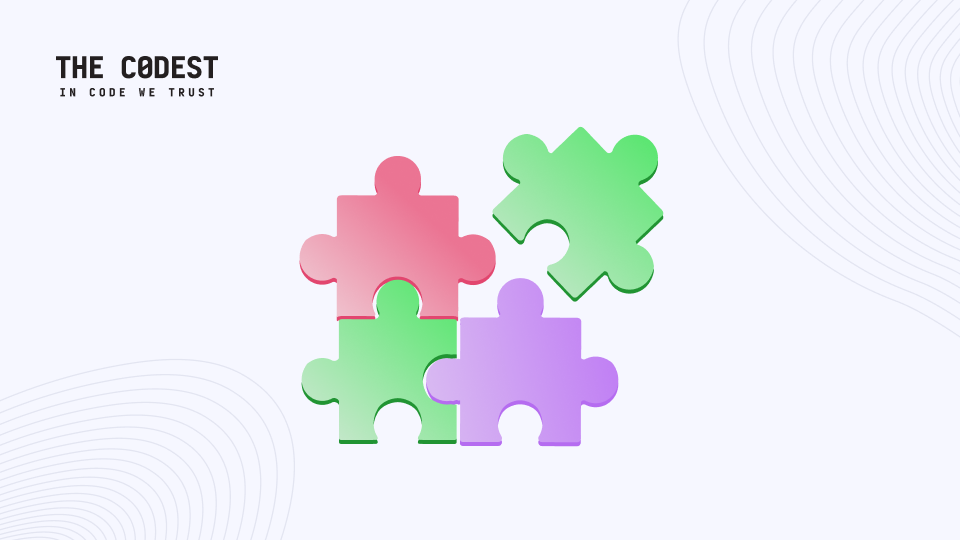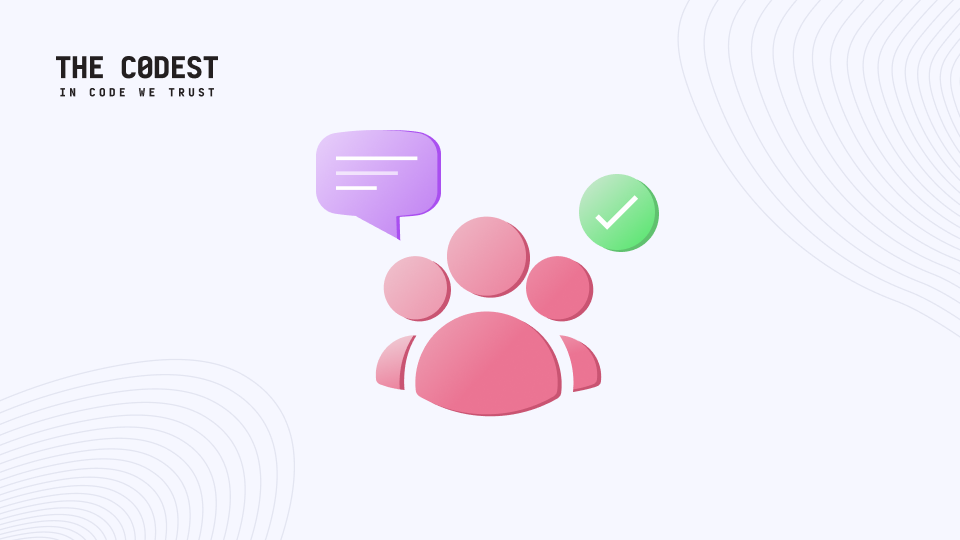We are launching a SaaS report dedicated to the whole SaaS market. It is a useful pill of knowledge for the non-technical founders who are struggling with many challenges, especially the technological ones. Check out the report and make sure to eliminate common mistakes that can hurt your business.
Is it worth building SaaS startups if you are non-technical?
This is quite a common dilemma for all those who dream of their SaaS, but do not know whether their lack of technical skills will thwart their plans. Well, don’t worry! In the past, many SaaS-based startups have sprung up, whose founders were non-technical and successful.
It is all about planning the whole process well. Non-technical founders may have an extremely strong business mindset. The biggest challenge, however, is to transfer the idea into a business. And that means coding, of course.
No worries.In this short tutorial, you will read how to successfully build aSaaS productwith no programming skills. We will show you step by step how a SaaS building process should look like and how to develop an agile approach to this topic as a non-technical founder.
What are the biggest challenges to a non-technical founder?
SaaS development is a challenging process. You can’t build a software business if you can’t make software yourself. Therefore, we can list the three most significant challenges that you must meet as a non-technical founder:
-
Building an in-house team or hiring external consultants.
-
Choosing the right technology.
-
Keeping the entire software development process in check.
As you can see, everything has to do with building software. For this, you need a team, knowledge, competencies, and experience. You have two paths to choose from: either build an in-house team or find external software development partner.
Which solution will be more effective? This depends on many factors, such as time pressure and budget. You must remember that building an in-house team will require an extensive time commitment and usually involves higher expenses. Until recently, it was the most popular way of building a team, but recently, it has been losing importance with the growth of the popular model of outsourcing services.
It is simply more profitable for companies to find a trustworthy software development partner who will take care of comprehensive product development. Being a non-technical founder, you would certainly have a problem choosing the right technology to match your product’s specifics and make other important decisions related to the software development process. All this is the responsibility of the* software development company*.
Average Global Software Development Rates:

MVP as the most popular way to deliver product time to market
Ok, so what is the MVP (Minimum Viable Product) exactly?
MVP (Minimum Viable Product) is a product with just enough features to satisfy early customers and provide feedback for future *product development*. In other words, it is a product built as quickly as possible with enough basic functionalities. This approach allows the implementation of a product on the market so that the customer can test it, gather feedback, and continuously improve it. The MVP provides cost-effectiveness and time savings.
Advantages of going with MVP:
-
Thanks to your MVP, you will confront your ideas with reality. You will be able to find out if customers want to use your product. You will gain knowledge about its strengths and weaknesses. This will allow you to develop your product and make the right decisions in the future.
-
I bet that your product has potential in various areas that you haven’t even considered. Sometimes, it is good for a third party to look at it from a different perspective and share credible feedback with you. Also, when it comes to obtaining financing, the matter is simple if you use this approach – create an MVP, present a product to the market, collect data, prove to the investor that people want to use it. In this way, you will have reliable information that can convince the investor to fund the project.
-
Maybe you should consider getting in touch with your future users and even potential investors. It is a straightforward process. They see a product prototype that allows them to estimate their value and decide whether they will be willing to use it or possibly invest in it. In turn, you will not lose funds unnecessarily by developing functionality that might not make sense at all.
-
Unfortunately, sometimes, it will happen. You may believe that your product is excellent, but the users say otherwise. You must consider the possibility of withdrawing the product from the market or completely re-designing it. Thanks to your MVP, you will acquire such knowledge as soon as possible, which will save you time and money.
-
Cutting development costs. The MVP approach is simply cost-effective. You don’t waste money unnecessarily on something that later turns out to be useless. And if you build a product from scratch, you know how big a development budget you need. All savings are, therefore, important.
-
Thanks to a MVP, you can easily add more functionalities over time. If you manage the development process well, I’m sure that the development team will be able to improve your product with new features in a relatively short time.
-
This last fact has already been mentioned in several other points, but it is worth emphasizing once again. Collecting data on customer behavior and their needs is very important for the development of your product. Each MVP allows you to learn about your target group, make the right decisions and constantly stimulate product development.
Is it for me?
Yes, the MVP approach works well while building a SaaS product. We have no doubt that going with a MVP, you increase your chances of final success. At The Codest, we have successfully implemented many projects of this type and we can confirm – it works!
Our useful tips on how to build a SaaS product in 6 simple steps
Validate your business idea
Start with defining a problem that your Saas can solve. Your product should solve the specific problem of your buyer persona which will guarantee that you will find your customers.
Of course, you have to define this group. Answer the question of who your customers are, identify their preferences and behaviors, and the size of the group. Based on this data, you will be able to determine the business potential of your SaaS product.
Focus on the value, as well. Ideally, there should be no competing product on the market. Of course, in this case, you also have a chance of success, provided that you bring to the market a new, innovative solution. It is all about the product’s value.
Find an experienced Product Designer
User Experience (UX) is one of the most crucial parts of building your SaaS. Why? Here are the most important features of a good UX:
– aesthetics – an attractive appearance will increase conversion and have a positive impact on the purchasing decisions of your potential customers.
– usability – it is logical that you want your SaaS to provide value to the customer, solve their problems and encourage them to use it
– intuitiveness – this is another factor that will increase conversion. The sooner customers are able to find the information they are interested in, the better they will evaluate your product, which will increase the chance that they will start the purchasing process
Where to find a good UX designer?
Behance and Dribbble are a good place to start. There, you will find hundreds of interesting and inspiring projects. Of course, it is ideal if the UX designer will be part of an entire software development team, which will facilitate further cooperation.
Create product requirements
This is a document that describes all product requirements. You create it so that others understand why specific functionalities are built, what tasks they have to fulfil, and what they should look like. This document is a source of knowledge for the designers and software development team. With this, they will be able to reflect your vision and build the product in accordance with your expectations.
Here are some examples of elements that should be included in the “product requirements”:
-
Product Design Overview
-
Product Features and their priorities
-
Use Case story
-
Pain points and solutions
-
User stories
-
Hook Model worksheet
Find a UI designer
You already know what your product should look like, what features it should have, and what value it should deliver to the market (you know your goals). Now, you should involve an experienced UI designer in the whole process. He will take care of designing an attractive and catchy design for users.
What features does a good UI design reflect?
-
Attractive colors
-
The visual hierarchy of elements
-
Proper selection of the font and its size
-
Attractive graphics and other graphics
-
Animations
-
Orderly content layout
The most challenging part of the whole process will be to combine all these features into one whole. However, this is the task of the UI designer. Hire a professional and then you can be confident of the end result.
Finding the software development team
Building software from scratch is a demanding task, but for an experienced team, it shouldn’t be a big problem. It is crucial that your product is taken care of by developers who have experience in similar projects.
This process is very important because you have to choose the right technology and type of cooperation. You can build an in-house team or outsource software services. The first option, especially when you are at the stage of obtaining financing, can turn out to be very costly and time-consuming. Therefore, I recommend finding an external software development partner.
Where to look for a team of developers? The most popular site is the Clutch portal. There, you will find customer reviews, detailed descriptions of projects and you will be able to confirm whether the software house with which you want to start cooperation with is really a trustworthy partner.
Constant development and maintaining
When you launch the product into the market, you will certainly get valuable feedback from it. Some features will need to be improved or skipped: this is also the responsibility of your software development team. Your SaaS will be constantly developed and maintained. This is also the time to start sales and marketing activities.
Any questions?
Don’t hesitate to reach out in case of any questions. I really hope my tutorial figured out helpful for your business.
Read more:
3 Common Challenges of Software Product Development for Startups
Pros and cons of Ruby software development
How to write a good and quality code?







